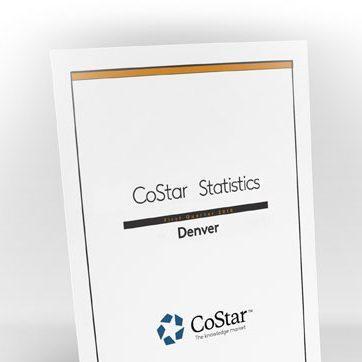Demand is moderating across Denver’s once-booming industrial market. Local population growth has slowed in recent years, just as inflation and economic uncertainties have accelerated. While leasing activity remained above the long-term quarterly average of 2.6 million square feet in 23Q2, this comes after the market logged upwards of 4 million square feet per quarter during most of 2021. Leasing activity has steadily decelerated since reaching that peak, presenting downside risk for the demand outlook. However, absorption picked up steam in the second quarter with a handful of large-scale tenants taking occupancy.
At 6.5%, Denver has one of the highest industrial vacancy rates among the 30 largest U.S. markets. Decelerating net absorption combined with a steady stream of industrial project completions has pushed
Denver’s vacancy ahead of the national average of 5.1%.
Denver has consistently held one of the lowest preleasing rates among major markets over the past two years, but recent build to suit activity has pushed preleasing rates higher. About 40% of space currently
under construction is preleased, which now ranks above the national average. Still, supply risk from speculative construction remains, particularly in Denver’s big box segment which maintains the highest availability rates. The impact of newly built industrial space will vary across the market. Areas with already high availability rates and a slew of new construction deliveries on the horizon, like North and Northeast Denver, could see leasing timelines extend further as tenants have more options to choose from. The East I-70 corridor, an area that has long served as Denver’s traditional industrial node, commands the lion’s share of construction activity. However, with a comparatively lower availability rate and the market’s most impressive absorption averages, this area has more runway before tenants gain bargaining power in lease negotiations. Meanwhile, West Denver, the first stop for imports transported from west coast ports, holds one of the lowest availabilities across Denver and a limited construction pipeline.
Annual rent growth is decelerating, averaging 6.3%, which is down from the 9% gains achieved a year ago. The 2023 forecast has annual rent growth falling below the 10-year average. The robust pipeline will have an outsized impact on big box fundamentals, and those properties will likely see the most downward pressure on rent growth.
Investment volume slowed year-to-date, falling to the lowest level recorded in more than five years. Traded properties in the past year averaged an 87% occupancy rate, demonstrating investor appetite for cash-flowing assets. As credit markets continue to tighten, there could be additional pressure on deals in the year ahead.
VIEW FULL REPORT – Industrial Market Report

